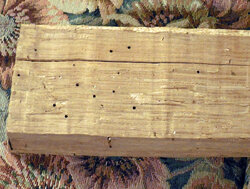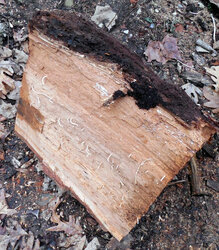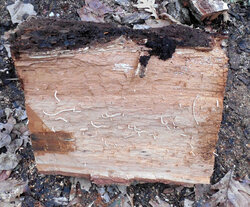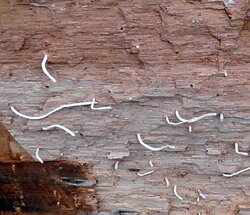I find weird stuff interesting. We've all seen those small holes in oak boards or whatever, but I finally saw what must make them. I figured it was a bug. This looks to be a fungus of some kind. They had an almost Styrofoam texture and were much stronger than I expected.
I'm assuming that if I see these, the lumber was very close to the end of its life. It still blows me away how intertwined varieties of life can be.
Here's an old split with said holes.

This has got to be the culprit.


I'm assuming that if I see these, the lumber was very close to the end of its life. It still blows me away how intertwined varieties of life can be.
Here's an old split with said holes.

This has got to be the culprit.









